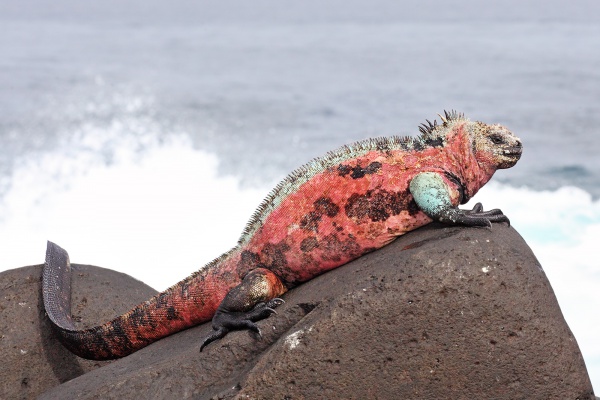Facts About Marine iguana
The marine iguana, also known as the sea iguana, saltwater iguana, or Galápagos marine iguana, is a unique species found exclusively on the Galápagos Islands. These remarkable reptiles have adapted to thrive in the ocean, where they forage primarily for algae, their main food source. Despite appearing somewhat awkward on land, they are impressive divers and swimmers.
First described in 1825 by Thomas Bell, the marine iguana is the sole species in the genus Amblyrhynchus. Scientists believe that marine iguanas and land iguanas share a common ancestor, having diverged millions of years ago. There are several subspecies of marine iguanas, each uniquely adapted to the specific island they inhabit.
Marine iguanas have a distinctive appearance, often exhibiting dark, nearly black, coloration. Males and females differ in traits such as spine length and head size. Depending on their island, their colors can vary, with males displaying more vibrant hues during the breeding season.
These reptiles exhibit fascinating behaviors, especially regarding reproduction, feeding, and thermoregulation. Large males defend territories and engage in ritualized combat during the mating season, while females lay and guard their eggs. Their diet primarily consists of algae, though some populations also consume other plants or even animal matter. They have evolved various physiological adaptations that enable them to dive and forage in the cold waters surrounding the Galápagos.
Unfortunately, marine iguanas are listed as vulnerable, facing threats from El Niño events, introduced predators, habitat loss, and human activities. Conservation efforts are underway to protect these unique creatures, including legislation, removal of invasive species, and monitoring programs. Research into their physiology and stress levels provides valuable insights into their health and supports conservation initiatives.

 Peru
Peru